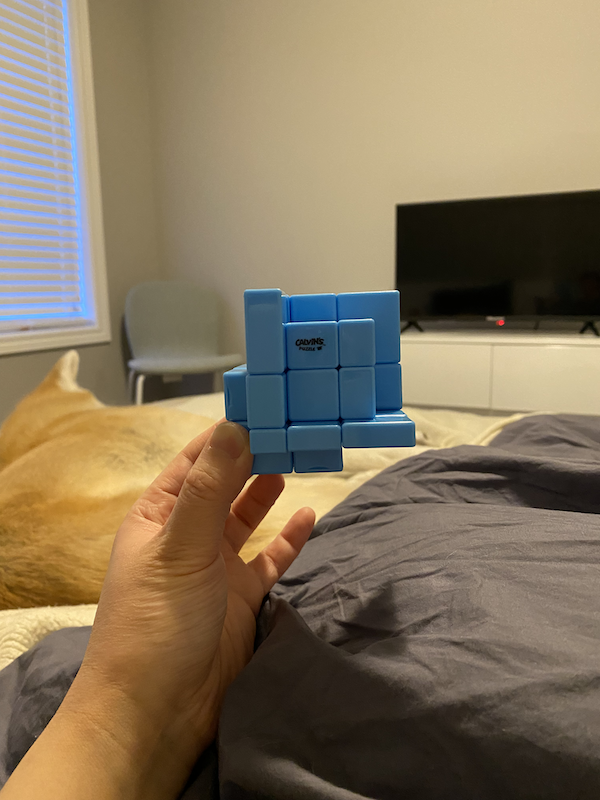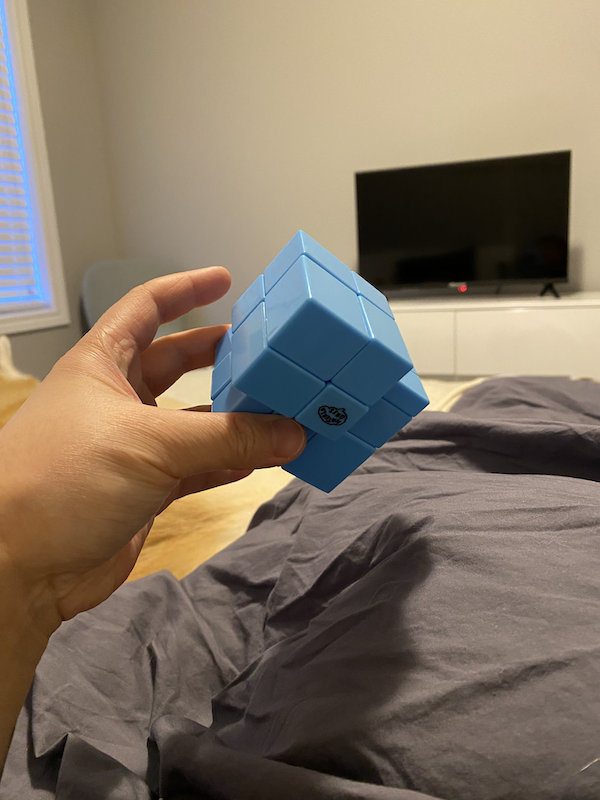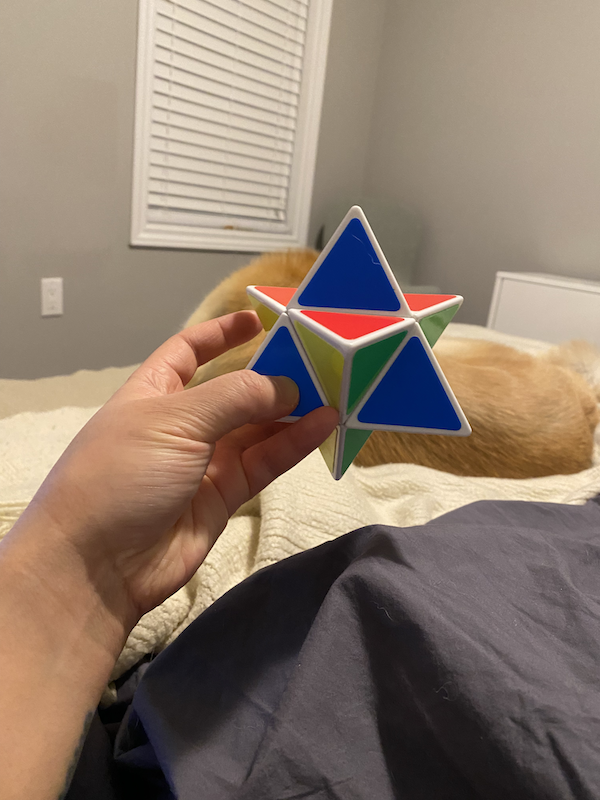Learning and Improving
Last updated February 17, 2024
Recently I taught a statistical mechanics lecture where I used Rubik’s cubes to illustrate a few concepts such as ensemble vs. time averages, randomly turning vs. using algorithms as analogies for stochastic and deterministic processes, and using procedures that can generate the entire phase space vs. ones that cycle only between a few states to explain ergodicity. Since I ended up scrambling a bunch of puzzles, I have been spending a lot of my time restoring them to the solved state and at the same time improving my procedure. When I first learned how to solve a 3×3×3 in high school, I was not very thorough with understanding an algorithm to orient the corners on the bottom face, so when I got to that stage I would kind of randomly apply the algorithm until I had all corners oriented. Now that I actually spent time figuring out how the different states relate to each other, I can be more efficient with applying this algorithm, and it turns out at most two applications of the algorithm is necessary to orient all corners.
I have also been obsessed with shape mods lately. I bought a Grey Matter Mirror Illusion Cube III a while ago but had not bothered to scramble it until recently. Without having the correct solution as a reference, I solved it like a normal mirror cube, and it almost worked!


As shown in the pictures, three of the centres are convex, and three others are concave. It’s super cool that the creator of this puzzle only had to change the centre heights slightly on a normal mirror cube to make it into an entirely new shape. It took me a lot more effort to solve it in the correct way, because the corners are very confusing even when looking at a reference picture. I messed up my corners twice and got very frustrated since I had to restart from the beginning both times. I eventually got there, though:


Another one of my current obsessions is the stellated octahedron, which is super confusing to look at but is really just a shape mod of the 2×2×2 cube. I managed to push through my brain melting and put it in the solved state today, so I guess I’m feeling pretty proud right now. The top and bottom views look like they are the same, but they are actually mirror images of each other. There are four colours total, red, green, blue, and yellow, so there are four possible colour combinations for each corner, i.e. each unique combination is missing one colour out of the four. Then, the three colours could be arranged clockwise or counterclockwise, so we have eight unique corners total, just like on a pocket cube. One difference is that on a regular Rubik’s cube, it’s pretty obvious which corner corresponds to which location, however for the stellated octahedron, I had to think about matching the colours on each face to see if I have the correct corner or the incorrect mirror image. Once I figured out how the colours should match up, it wasn’t too bad, but applying the corner orienting algorithm was still pretty tricky. I think I really like these incremental challenges that push my understanding of these puzzles, and it always feels like an accomplishment when I figure out the solution without having to look up a guide on the internet.

